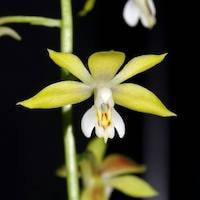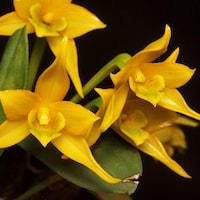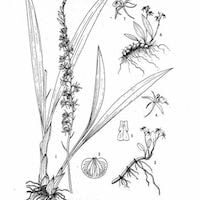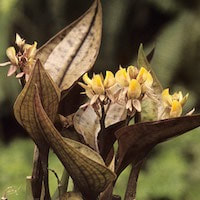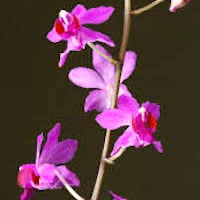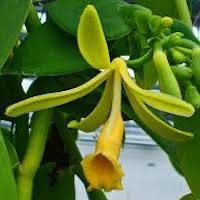WOR5- Women's Oriental 5 - Scentductress
|
Native Singaporean Orchid notes: Eria Pannea
Eria Pannea, an orchid species renowned for its vanilla-like scent, faces aesthetic reservations due to white hair on its flowers. However, its essential oil is highly prized. Recognized by Singapore's Urban Redevelopment Authority for its ecological value, efforts are underway to enhance its local population. In northeastern India's Arunachal Pradesh, it's one of 34 plants used in traditional medicine baths for treating fever and chills, earaches, and bites. Its aromatic appeal and medicinal potential highlight Eria Pannea's growing importance, featured prominently in the Oriental 5 (Women) team-building perfume workshop.
|
Therapeutic Orchid notes:
|
Calanthe graciliflora Hayata Syn. Calanthe hamata Hand. Mazz
Calanthe graciliflora, also known as Calanthe hamata, is a versatile orchid species celebrated in Chinese and Taiwanese herbal medicine. It bears several Chinese names like "Goujuxiaji Lan" and "Xiyegenjie Lan," and in Taiwan, it's recognized as the "slender flower Calanthe." Known medicinally as "Silima," all parts of the plant are utilized for their therapeutic benefits. In Taiwan, it is used to reduce fever, detoxify, and harmonize Yin elements, benefiting lung health and circulation while alleviating pain and coughing. In China, it treats rheumatism, bone pain, and injuries due to its anti-inflammatory and analgesic properties, emphasizing its broad medicinal use and cultural significance in traditional medicine systems. |
|
Dendrobium umbellatum Rchb. f.
Dendrobium umbellatum Rchb. f., known as Tingasu in the Murut language, is a dwarf orchid species cherished for its small size and delicate appearance. Found across Borneo and extending into Papua New Guinea, it thrives in tropical climates with high humidity and warm temperatures. In Murut traditional medicine, its leaves are brewed into a tea to alleviate stomachaches, showcasing its cultural importance. Conservation efforts are crucial to safeguard this orchid and its habitat, given its ecological role and traditional medicinal value in indigenous practices. |
|
Liparis fargesii Finet
Liparis fargesii Finet, also called Xiaoyangersuan or small lip sheep ear garlic in Chinese, thrives in cold-resistant conditions across Southern Gansu, Guizhou, Hubei, Hunan, Shaanxi, Sichuan, and Yunnan provinces at elevations from 300 to 1700 meters. Valued in traditional Chinese medicine as "Shimi," it is used for its cooling properties to alleviate respiratory ailments like tuberculosis and coughs. Despite its traditional use, more research is needed to understand its medicinal compounds fully. Conservation efforts are crucial due to threats such as habitat loss and climate change, safeguarding its role in herbal medicine and biodiversity. |
|
Nephelaphyllum pulchrum Blume
Nephelaphyllum pulchrum Blume, known for its distinctive scent and traditional medicinal uses, features creeping rhizomes, fusiform pseudobulbs, and heart-shaped leaves. Found across India and Southeast Asia in mountainous regions up to 1000 meters elevation, it contains small amounts of alkaloids known for their potential medicinal properties. Used traditionally as a diuretic, it aids in promoting urine production and treating injuries. Conservation is critical due to threats like habitat loss, ensuring the preservation of this orchid's ecological significance and potential medicinal benefits. |
|
Phalaenopsis pulcherrima (Lindl.) J.J.Sm. syn. Doritis pulcherrima Lindl.
Phalaenopsis pulcherrima (Lindl.) J.J.Sm., also known as Doritis pulcherrima Lindl., is a charming orchid species cherished for its sweet fragrance and medicinal uses. It grows widely across Myanmar, Thailand, Indochina, Hainan, northern Peninsular Malaysia, and Sumatra, thriving with numerous roots that enhance its resilience. While specific details on its scent are limited, Phalaenopsis orchids generally emit a delightful, sweet, and sometimes citrusy aroma. Traditional Thai medicine employs its leaves to treat ear infections, reflecting its cultural significance. Conservation efforts are crucial due to habitat loss and over-harvesting, ensuring the survival of this ornamental and potentially medicinal orchid species. |
|
Vanilla planifolia Jacks. ex Andrews
Vanilla planifolia Jacks. ex Andrews, known as vanilla, is an important orchid originally from Central America, growing in humid forests up to 600 meters high. It's now grown globally, including places like Madagascar, India, and Southeast Asia. Its famous scent comes from vanillin, created during curing when vanilloside changes. Vanilla pods have many compounds that give them a complex smell and taste, vital in cooking and making perfume. In India, people use the roots for their energy and to treat problems like gonorrhea. Growing vanilla needs lots of work, like hand-pollinating to make fruit, showing how valuable it is economically and culturally. |
Other scent note
Spices, lavender, animal musk, amber, white musks, Iso E super, Angelica, Cetalox, Labdanum, Cactus
Scentopia Library Reference ingredient
Turmeric- Sir Raffles Collection - Check details at Scentopia's scent library
Download the guided mediation that works best with this Orchid fragrance oil
| women_oriental_essential_oil_orchi_00005.mp3 | |
| File Size: | 134840 kb |
| File Type: | mp3 |

